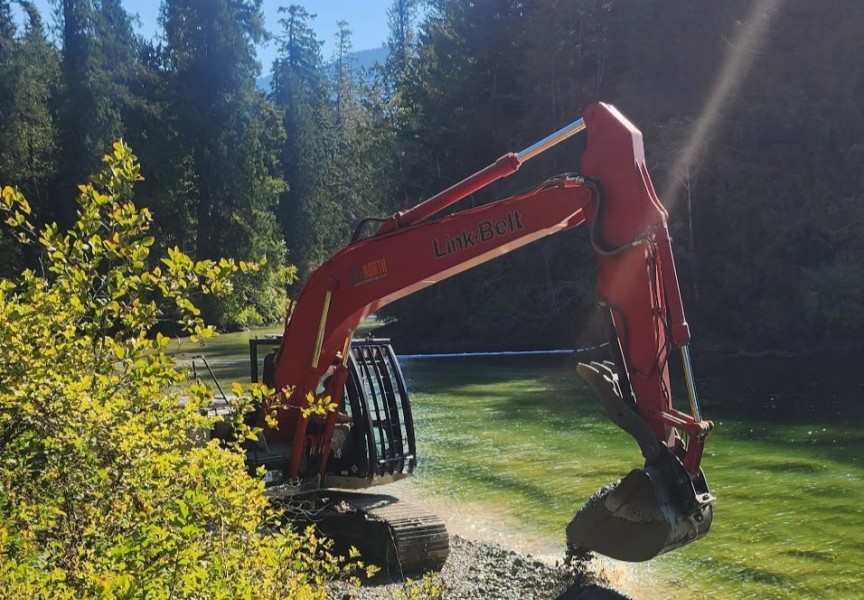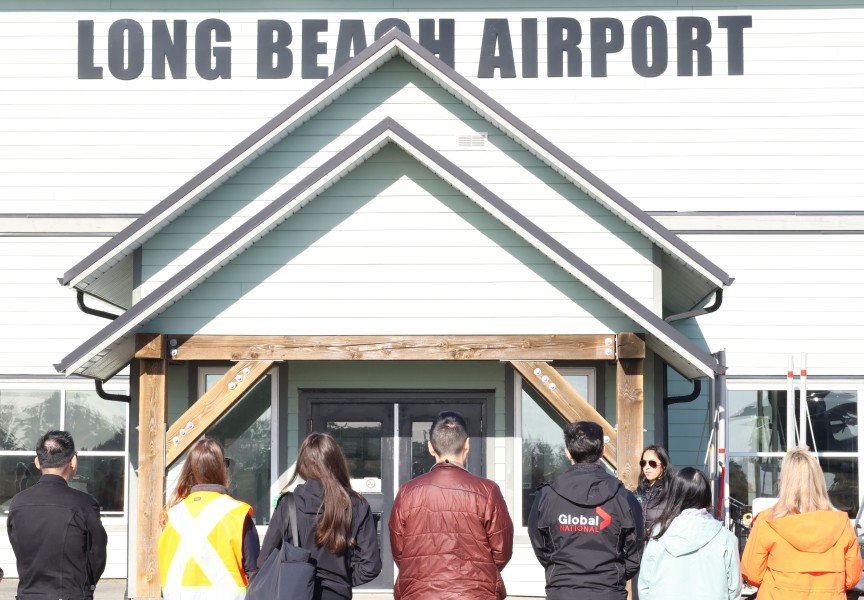A new study is offering the first national assessment of Canada’s kelp Forest, indicating a potential nature-based solution for the climate crisis.
A research team from the University of Victoria investigated how much carbon ocean ecosystems absorb and whether this process stores it long enough to help counter climate change. Over the last six years, scientists have increasingly focused on ecosystems like kelp forests, grasslands and wetlands as natural carbon sinks - areas that capture and store carbon dioxide from the atmosphere.
“We’ve been turning to nature to help alleviate the impact of climate change,” said Jennifer McHenry, lead researcher and UVic postdoctoral fellow with the Blue Carbon Canada association. “It comes down to wanting to store and draw down carbon in natural ecosystems that would otherwise circulate in the atmosphere, [that] potentially contributes to the climate crisis.”
Kelp forests not only capture carbon, they also help transport it across marine environments.
“It sort of washes back and forth with the waves,” McHenry said. “Pieces of carbon break and get transported across the ecosystem. Some of it [ends up] in shell sediments, [some] get buried . . . some of it breaks down to the point of where it’s no [longer] usable by marine organisms. Therefore, it's just trapped in this pool of dissolved carbon.”
According to McHenry, kelp is one of Canada’s largest coastal marine ecosystems, covering an estimated two million hectares, about twice the size of seagrass and salt marsh areas combined. The study was applied to the Canadian coasts, accounting for 16.2 per cent of the wold’s coastlines with kelp forests expanding in the Atlantic, Pacific and Arctic oceans. Current ocean current models show kelp’s high productivity, capturing between 40,000 and 400,000 tons of carbon from the atmosphere.
“Until recently, it’s been hard to measure how much carbon is produced and where it actually goes in the ecosystem,” McHenry added. “So, the study was really trying to, for the first time, determine how much carbon is in our kelp system in Canada.”
Even with a national data set for kelp ecosystems now available, there are still gaps in their mapping. More extensive mapping and long-term monitoring will be the next priority for researchers.
“There is a real opportunity for more research to truly understand what the potential will be,” said McHenry.
This also opens the door for community-led science. Marine Plan Partnership, an organization co-led by 17 First Nations organizations and the Provincial Government of British Columbia, is actively gathering data on kelp forests across regions like Haida Gwaii, the North Coast, Central Coast, and Nanwakolas Council territory.
McHenry hopes that with the publication of the research, communities already supervising kelp forest can make more informed decisions about conservation and protection. The ongoing research process also allows community scientists to take a more hands-on approach, like measuring the carbon uptake of kelp.
“Communities for a long time have known the value of kelp forests for other reasons. Their support for fisheries, [and their] contributions to coastal communities are absolutely invaluable,” said McHenry.
According to Oceana, kelp forests are underwater habitats for thousands of invertebrate species, fish and other algae. Some species spawn in kelp forests or use these areas as nurseries for their young, and predatory species like sharks and marine mammals use these areas as hunting grounds.
“It’s not just about the carbon [kelp is] capturing. It’s also about their role in the ecosystems and the role they play in supporting local communities.” McHenry said.
However, researchers point out the risks of depending entirely on kelp forests for carbon dioxide reduction.
“I don’t think kelp solutions alone will help us out of the climate crisis. The evidence [shows] that these systems capture a lot of carbon, but kelp investments don’t take away from the need for drastic fossil fuel reductions,” said McHenry.
Excessive carbon uptake can alter the ocean’s pH levels, impacting marine life that depends on these ecosystems. The higher the absorption of carbon dioxide, the more the pH decreases, making the ocean more acidic.
Researches note that kelp forest can aid, but not replace, other actions to reduce the climbing temperatures. For instance, the Center for Science and Education estimates transportation contributues 14 per cent of global greenhouse gas emissions. Local communities can aim to reduce carbon dioxide by using alternative ways of transportation like bikes, using the public transportation or carpooling. Hence, reducing the reliance on fossil fuels and help cut emissions.
“I want to continue to emphasize that our results are really promising,” stressed McHenry. “It suggests that [kelp] systems are taking a lot of carbon and...there’s a lot of potential climate mitigation benefits of protecting and restoring our kelp forests.”
To read the full article, visit npj Ocean Sustainability online. The study is a collaboration amongst 24 co-authors from various institutions in Canada, Australia, and the United States, with funding by the Fisheries and Oceans Canada and the Natural Sciences and Engineering Research Council of Canada.









